How to Make Coffee Espresso: A Professional Guide
Making espresso is an art form that requires precision, attention to detail, and a bit of practice. Whether you’re a coffee lover or a bartender in training, learning how to prepare espresso at home can be a rewarding experience. In this article, Aspect Coffee Works will guide you on how to make coffee espresso, from choosing the right beans to pulling a shot.
Contents
Understand Espresso Coffee

As a coffee enthusiast, I understand the importance of knowing the different types of espresso drinks available. Here are some popular ones:
- Espresso
Espresso is a concentrated coffee that is made by forcing hot water through finely ground coffee beans. It is the base for many other strong brewed coffee. A single shot is about 1 ounce and a double shot is about 2 ounces.
- Americano
Americano is made by adding hot water to a single espresso. It has a milder flavor than espresso and is a great option for those who prefer a less intense coffee taste.
- Cappuccino
Cappuccino is made with equal parts of espresso, steamed milk, and milk foam. It has a creamy texture and is usually served in a small cup.
- Latte
The latte is made with a shot of espresso and steamed milk. It has a smooth and creamy texture and is usually served in a larger cup.
- Macchiato
Macchiato is made with a single espresso and a small amount of milk foam. It has a bolder taste than a latte or cappuccino.
- Mocha
Mocha is made with a shot of espresso, milk, and chocolate syrup. It has a sweet and rich flavor and is a popular choice for those who enjoy a sweet coffee drink.
Knowing the different types of espresso drinks available will help you make an informed decision when ordering your next coffee.
Ingredients to Make Espresso at Home

If you want to make this strong brewed coffee at home, you need to have a few key ingredients. Here are the basic ingredients you will need:
- Espresso Beans
Choosing the right beans is crucial. Arabica and Robusta beans, often in blends, work well. Freshness, roast level, and origin are essential factors. With high-quality beans, you can create a delicious cup of coffee.
- Water
Water is the second most important ingredient. It’s important to use clean, filtered water that is free from impurities. The ideal temperature for brewing is between 195°F and 205°F.
- Milk (Optional)
If you like your espresso with milk, you will need to have milk on hand. You can use any type of milk you prefer, but whole milk is the most commonly used.
- Sweeteners (Optional)
If you like your espresso sweet, you can add sugar, honey, or any other sweetener you prefer.
- Equipment
There are many different types of machines available for you to prepare espresso at home, from manual machines to fully automatic machines. Choose the one that best suits your needs and budget. You will also need a grinder to crush your beans, an alter to pack the grounds into the portafilter, and a milk frother if you want to make milk-based espresso beverages.
Now that you know the basic ingredients, let’s move on to the next step: preparing the machine.
Best Coffee Beans for Espresso

As a professional barista, I know that choosing the right beans is crucial for making a delicious espresso. While any beans can technically be used to prepare espresso, certain types of beans are better suited for the job.
Here are some of the best beans:
- Arabica Beans
Arabica beans are the most common type of beans used for strong brewed coffee. They have a delicate flavor with a low acidity level. Arabica beans are grown in high-altitude regions and are known for their smooth and sweet taste.
- Robusta Beans
Robusta beans are another popular choice for preparing espresso. They have a strong and bold flavor with a high caffeine content, which makes them perfect for milk-based drinks. Robusta beans are grown in low-altitude regions and are known for their earthy and bitter taste.
- Blends
Blends are a combination of different types of beans. They are often used to create a unique flavor profile for espresso. Blends can be made up of Arabica and Robusta beans, or a combination of different Arabica beans. The key is to find the right balance of flavors to create the perfect blend.
When choosing beans, it’s important to consider factors such as the roast level, freshness, and origin. I recommend choosing high-quality beans that are freshly roasted and have a rich flavor profile. By selecting the right beans, you can create a delicious and satisfying strong brewed coffee that will impress even the most discerning coffee drinkers.
Equipment Needed
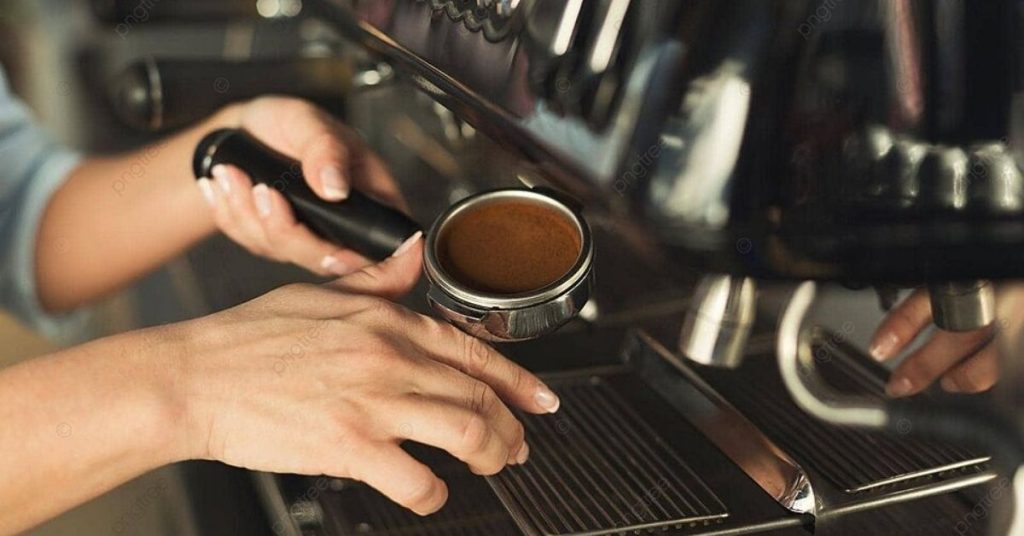
When it comes to making this strong brewed coffee, having the right equipment is crucial. Here are the essential pieces of equipment you’ll need:
Espresso Maker
The most important piece of equipment is, of course, the espresso maker. There are many different types of makers available, from manual lever machines to fully automatic models. It’s important to choose a machine that fits your budget and your skill level. If you’re just starting, a basic pump-driven machine is a good choice. If you’re more experienced, you may want to invest in a higher-end model with more features.
Coffee Grinder
To have an espresso cup, you’ll need a coffee grinder that can crush your beans finely enough. A burr mill is the best type for this coffee, as it produces a consistent grind size.
Tamper
A tamper is a small tool that’s used to compress the coffee grounds into the portafilter. It’s important to use it that fits the size of your portafilter, as using the wrong size can result in uneven extraction. A good one should be made of solid metal and have a comfortable grip.
Scale
Using a scale to weigh your coffee and water is essential for making consistent espresso. A digital scale is the most accurate type of scale to use. You’ll want to weigh both your coffee and your water to ensure that you’re using the correct ratio. A good starting point is a 1:2 ratio of coffee to water, but you can adjust this to your taste.
In summary, you’ll need a maker, a coffee mill, an altar, and a scale. With these essential pieces of equipment, you’ll be on your way to making delicious drinks in no time.
Dosing and Tamping
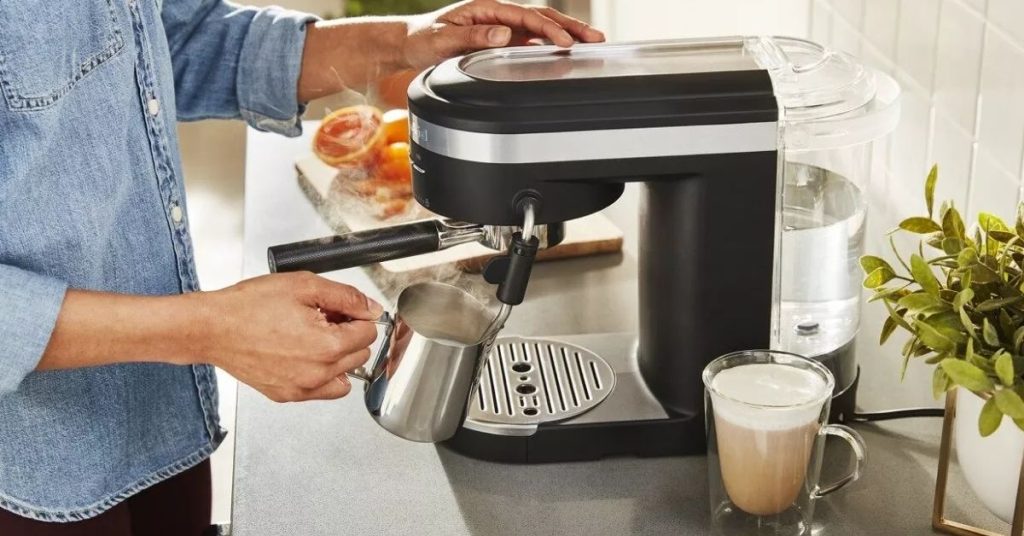
Dosing and tamping are two essential steps that can make or break your shot. These steps determine the amount of coffee grounds you use and how tightly they are packed into the portafilter basket.
Dosing
To start, I measure out the appropriate amount of coffee grounds for a single or double shot using a scale. The amount of coffee used, also known as the dose, can vary depending on the type of coffee and personal preference. As a general rule, a single shot requires 7-8 grams of coffee, while a double shot requires 14-16 grams of coffee.
Tamping
Once the coffee grounds are in the portafilter basket, the next step is tamping. Tamping is the process of compressing the coffee grounds into a tightly packed puck using an alter. This step is crucial as it ensures that the water flows through the coffee evenly, extracting the flavors and aromas.
To compress the coffee, I hold the tamper level and apply even pressure. Starting with light pressure, I gradually increase the pressure until the coffee grounds are compacted down firmly. A good puck should be firm and level, with no gaps or loose grounds.
It’s important to note that the pressure applied during compressing can affect the quality of the shot. Too little pressure can result in a weak and watery shot, while too much pressure can cause the water to flow through the coffee unevenly, resulting in a bitter and over-extracted shot.
In conclusion, dosing and compressing are two crucial steps in making a great shot. By measuring the appropriate amount of coffee grounds and compacting them down firmly, you can ensure that the water flows through the coffee evenly, resulting in a flavorful and aromatic shot.
How to Make Coffee Espresso with a French Press
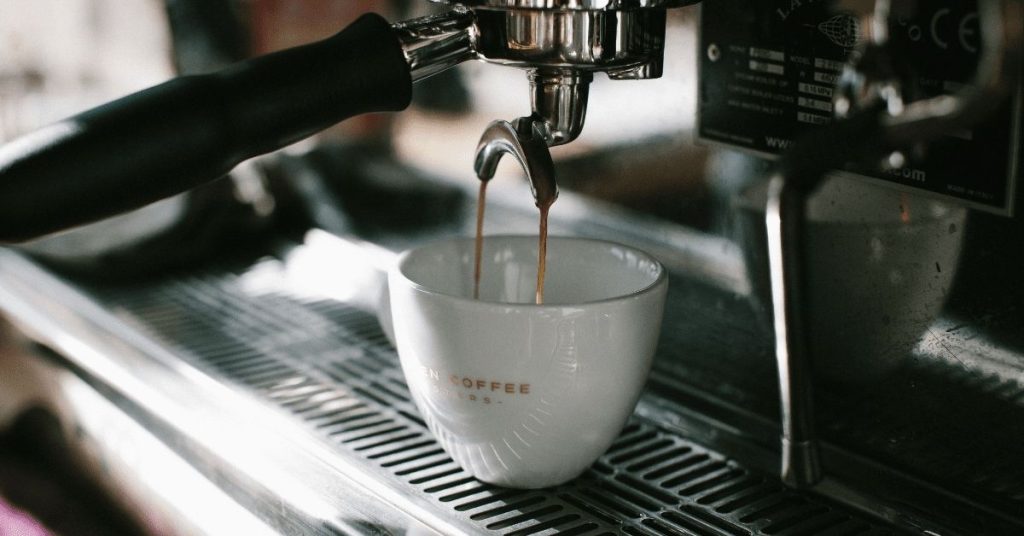
As a coffee drinker, I understand the importance of a good cup. While there are many methods to make, using a French press is a simple and easy way to brew a rich and flavorful cup of coffee at home. Here are two methods with a French press:
Method #1: The AeroPress
The AeroPress is a popular and efficient method to prepare strong brewed coffee with a French press. Here are the steps to follow:
- Grind your beans to a fine consistency.
- Boil water and let it cool for a few minutes until it reaches a temperature of 195°F to 205°F.
- Add the coffee grounds to the AeroPress.
- Pour hot water into the AeroPress and stir for 10 seconds.
- Insert the plunger and press down slowly to extract the coffee.
Method #2: The Moka Pot
The Moka Pot is another popular method. Here are the steps to follow:
- Fill the bottom chamber of the Moka Pot with water up to the safety valve.
- Add ground coffee to the filter basket and level it off.
- Screw the top and bottom chambers together and place the Pot on a stove over medium heat.
- Wait for the espresso to start flowing and remove the Pot from the heat once the top chamber is full.
- Pour the coffee into your cup and enjoy.
By following these methods, you can easily make a delicious cup at home using a French press. Experiment with different beans and brewing methods to find the perfect espresso for your taste buds.
How to Make Coffee Espresso Without a Machine
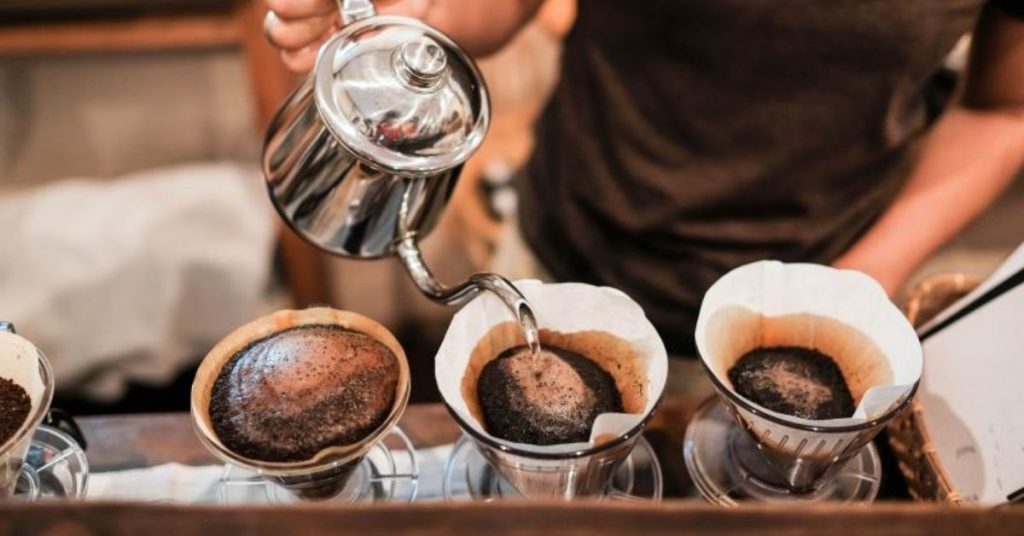
As a coffee lover, I understand the importance of a good shot. But what if you don’t have an espresso machine at home? Don’t worry, you can still enjoy a delicious shot without a machine. Here are a few methods to do without a maker:
Method 1: Moka Pot
A Moka pot is a stovetop coffee maker that is commonly used in Europe to make espresso-like coffee. You can follow these steps:
- Fill the bottom chamber of the pot with water up to the safety valve.
- Fill the filter basket with ground coffee and level it off.
- Place the filter basket inside the bottom chamber and screw the top chamber onto the bottom chamber.
- Place the pot on the stove over medium heat.
- When the coffee starts to come out of the spout, turn off the heat and pour the coffee into a cup.
Method 2: French Press
A French press is a coffee equipment that uses a plunger to press the coffee grounds to the bottom of the pot. Here are the steps to follow:
1. Boil water and let it sit for a minute to cool down slightly.
2. Add finely ground coffee to the French press. Use a ratio of 1:2 coffee to water.
3. Pour hot water over the coffee and stir.
4. Place the plunger on top of the French press and let the coffee steep for 4 minutes.
5. Slowly press the plunger down and pour the coffee into a cup.
Method 3: Aeropress
An Aeropress is a coffee maker that uses air pressure to extract the coffee. Follow these steps:
- Boil water and let it sit for a minute to cool down slightly.
- Add finely ground coffee to the Aeropress. Use a ratio of 1:2 coffee to water.
- Pour hot water over the coffee and stir.
- Insert the plunger and press down slowly to extract the coffee.
- Pour the coffee into a cup.
By following these methods, you can make a delicious shot without a machine. Experiment with different methods and find the one that works best for you.
Troubleshooting Common Issues
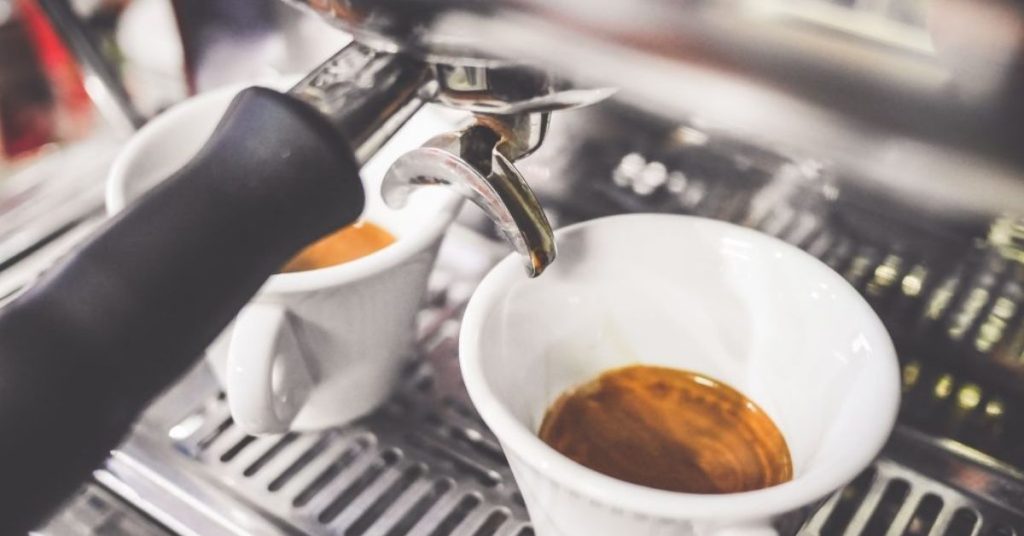
Espresso is a delicate and complex drink that requires attention to detail to make it perfect. Even experienced baristas can encounter problems when making this type of coffee. Here are some common issues and how to troubleshoot them.
Weak Espresso
Weak espresso can be caused by several factors, including the crush size, the amount of coffee used, and the water temperature. If the size is too coarse, the water will pass through the coffee too quickly, resulting in a weak level. To fix this, adjust the size to be finer. If the size is correct, try using more coffee. The standard amount of coffee for a single espresso is 7 grams, but you can increase this to 8 or 9 grams to make the coffee stronger. Finally, check the water temperature. The ideal temperature for brewing is between 195°F and 205°F. If the water is too cold, the espresso will be weak.
Bitter Espresso
Bitter espresso is usually caused by over-extraction, which means that the water has passed through the coffee for too long. This can be caused by using too fine of grind size, using too much coffee, or compressing the coffee too hard. To fix this, adjust the size to be coarser. This will allow the water to pass through the coffee more quickly. You can also try using less coffee or compressing the coffee less firmly.
Remember that making this kind of coffee is a skill that takes time and practice to perfect. Don’t be discouraged if you encounter problems along the way. With patience and persistence, you’ll be able to troubleshoot any issues and make delicious coffee every time.
Conclusion
In conclusion, making a perfect cup of espresso requires the right equipment, quality beans, and a bit of practice. With the right tools and techniques, anyone can create a delicious, rich, and creamy shot.
When making this kind of coffee, it’s essential to use freshly roasted beans and grind them just before use for the best flavor. A high-quality machine with a powerful pump and precise temperature control is also crucial to achieve a perfect shot.
Remember to preheat your machine, use the right amount of coffee, and compress it evenly to ensure consistent extraction. Experiment with different brewing times and water temperatures to find the sweet spot that suits your taste buds.
Finally, don’t forget to clean your equipment regularly to maintain its performance and longevity. A clean machine ensures that your coffee tastes fresh and free of any unwanted flavors.
By following these tips and techniques, you can become an expert in making espresso at home and impress your friends and family with your barista skills.







